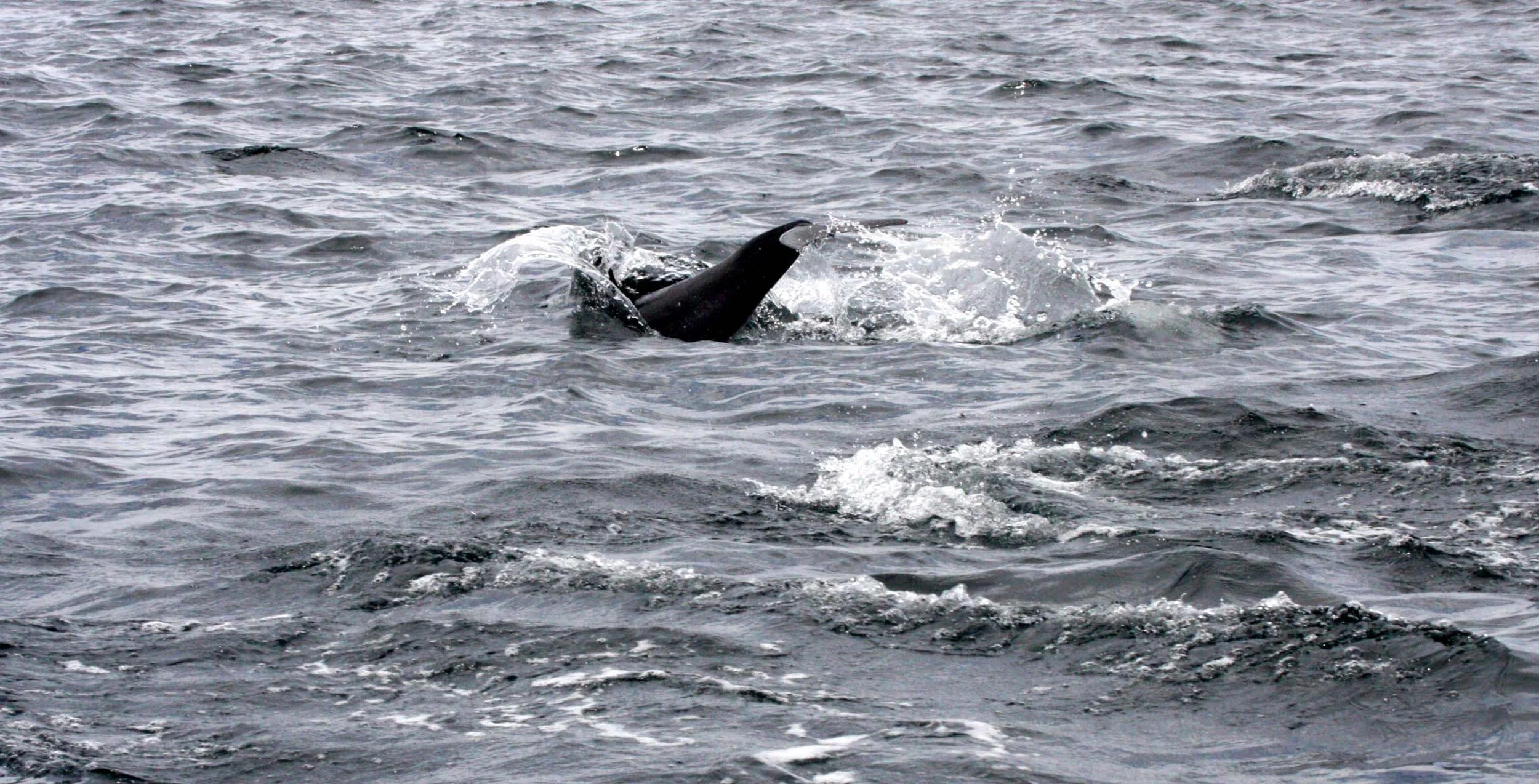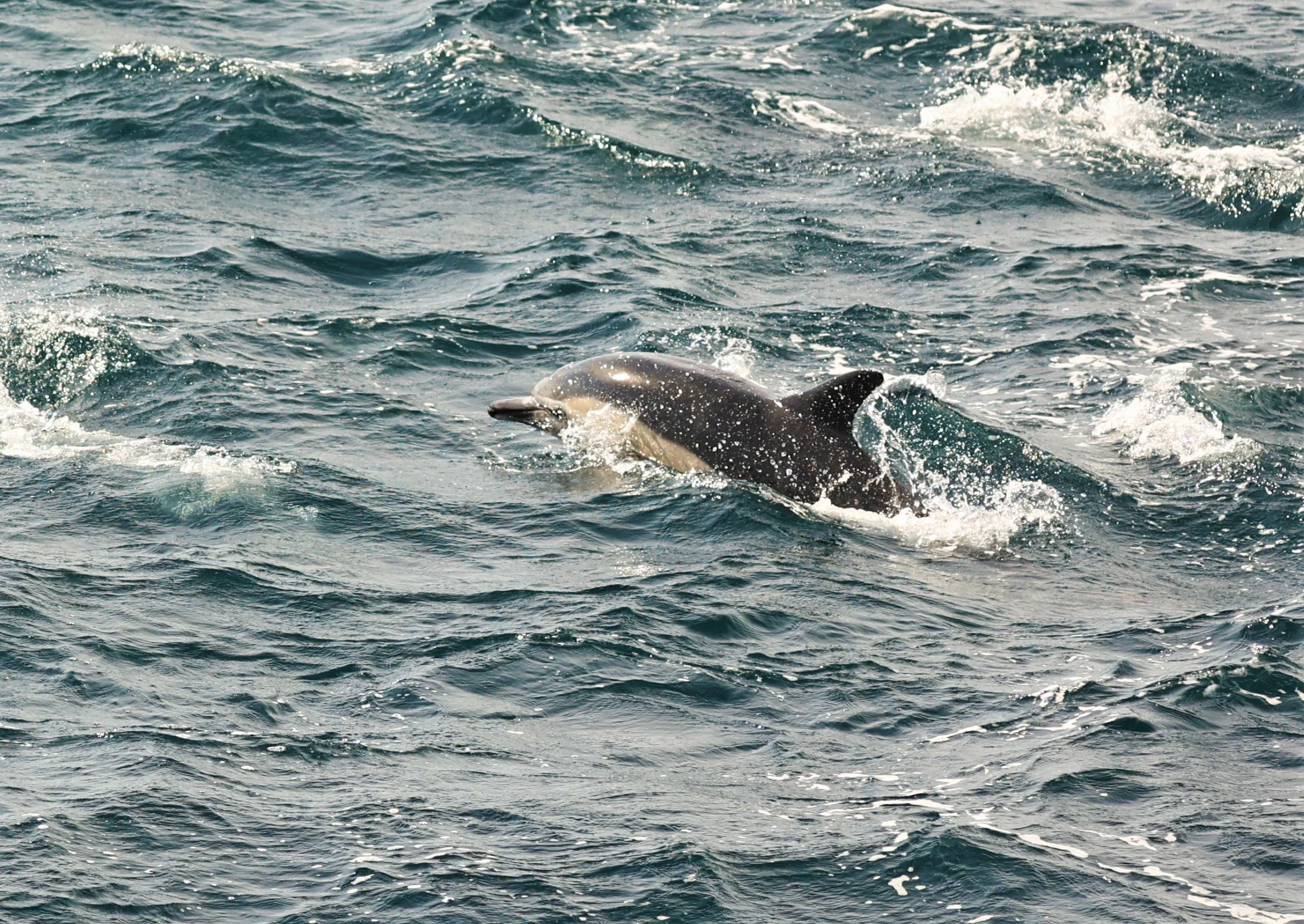
Common Dolphins
The Common Dolphin (Delphinus delphis) is the most abundant cetacean in the world, with a global population of about six million. Despite this fact and its vernacular name, the common dolphin is not thought of as the archetypal dolphin, with that distinction belonging to the bottlenose dolphin due to its popular appearances in aquaria and the media. However, the common dolphin is often depicted in Ancient Greek and Roman art and culture, most notably in a mural painted by the Greek Minoan civilization.
It is presently the only member of the genus Delphinus. The common dolphin belongs to the subfamily Delphininae, making this dolphin closely related to the three different species of bottlenose dolphins, humpback dolphins, striped dolphins, spinner dolphins, clymene dolphin, spotted dolphins, fraser's dolphin and the tucuxi and guiana dolphin. The common dolphin was originally categorized into two different species (now thought to be ecotypes), the short-beaked common dolphin and the long-beaked common dolphin. However, recent evidence has shown that many populations of long-beaked common dolphins around the world are not closely related to one another and are often derived from a short-beaked ancestor and do not always share common derived characteristics. For this reason, they are no longer considered different species.
The below galleries are of both Long-beaked Common Dolphins (Didelphis capensis) and Short-beaked (Delphinus delphis) seen off the coast of California and other locations in the Pacific and Sea of Cortez, off Loreto Baja Mexico.



















































































































































Short-beaked Common Dolphins (Delphinus delphis)






































































